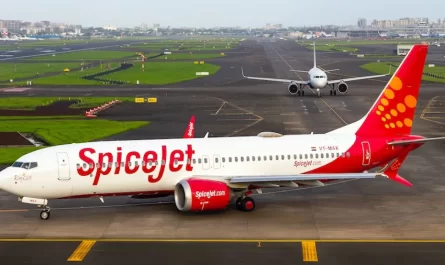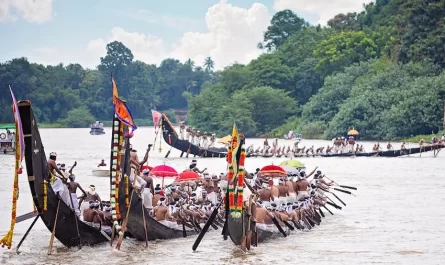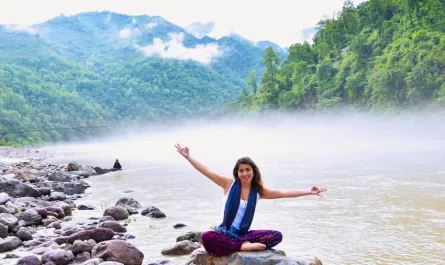Travel to India with these expert tips for information to have a safe and comfortable trip.
Contents
India is a wonderful country with many wonders or marvels to see and plenty of things to do. The massive crowds, the visual explosion of color full saris, lumbering cows, polluted weather, traffic jams, and chaos are inherent features of India.
No wonder such attributes are also some unique encounters for the discerning visitor.
Many expatriates Indians living in western countries viz USA, UK, Canada, Europe, gulf and Australia are looking to visit their motherland after many years.
Western life of clean, air-conditioned, and safe environments find themselves in Indian Airport where huge crowds, polluted air, and stuffy weather prevails. The smelly, bright, and humid Indian airport suddenly gives them the impression that they are totally in a different world.
First time visitor to India
For many Indian visitors, anxieties only start after landing in India. In essence, the change from the cool, dry, and clean air to the hot, humid, smelly, and bright weather in India reminds them that they are completely in a different country which has many unique wonders to see and things to do while experiencing massive crowds, traffic jams, pollution, chaos, and bargaining.
The discerning visitor will not be disappointed as India has many marvels to offer- the majestic Taj Mahal in New Delhi, Swami Vivekananda’s temple in Trivandrum in Southern India, tourist hot spots in the Himalayas, Sandy beaches in Goa, and many more. So any first-time visitor must know simple tips and helpful ways to travel in India. By knowing such simple tips and tricks, the inexperienced visitor can enjoy India’s beauty and culture without losing his or her valuable belongings, money, calmness, and directions.
When traveling alone in India, any visitor should:
Make a short list of things to do and want to see. Such planning will help any first-time visitor be more focused and make his or her stay meaningful.
Always try to dress in traditional clothing and act like a true Indian citizen who knows exactly what he or she is doing and where he or she is moving around.
The check-in time for flights departing from Indian airports can vary depending on the airline and airport. However, as a general guideline, it’s recommended that passengers arrive at the airport at least 2-3 hours before their scheduled departure time for domestic flights and at least 3-4 hours before for international flights.
This extra time allows for sufficient time to complete check-in formalities, security screening, immigration procedures, and any other necessary pre-flight procedures. Additionally, some airports in India may have long queues, so arriving early can help ensure you have enough time to navigate through the airport and reach your gate promptly.
It’s always a good idea to check with your airline or travel agent for your flight’s recommended check-in time. Additionally, you can check the airport’s website or contact their customer service for more information on check-in procedures and recommended arrival times.
Scams to Avoid in India
India is a wonderful country to explore, but like any travel destination, it’s important to be aware of potential scams that can occur. Here are some common scams to avoid while traveling in India:
- Fake Tourist Information Centers: Be wary of individuals or companies posing as official tourist information centers. They may offer you a fake itinerary, overcharge you for services, or pressure you into buying a package.
- Fake Goods: Be cautious when buying souvenirs or goods from street vendors as they may be fake or low-quality. Always bargain and compare prices before making a purchase.
- Taxi and Auto Rickshaw Scams: Be careful of taxi and auto-rickshaw drivers who may overcharge you or take you on a longer route than necessary. Always negotiate the fare before entering the vehicle and use a meter if available.
- Credit Card Scams: Be cautious when using credit cards, especially in smaller shops and markets. Always check the amount before signing and make sure the card is never out of your sight during the transaction.
- Charity Scams: Be wary of individuals asking for donations or claiming to be part of a charity organization. Always verify the authenticity of the organization before donating.
Fake Police Officers: Be wary of individuals posing as police officers who may ask for your passport or demand money as a fine. Always ask for identification and call the police emergency number (100) to verify their authenticity.
By being aware of these common scams and staying vigilant, you can safely enjoy your travels in India and avoid falling prey to fraud.
Watch out for tricksters or slimy characters looking for gullible or innocent prey.
Never talk to strangers. If anyone needs information, always go to an official travel information desk, website, or other tourist information centers to get the required information.
Tourist Guide in India
If you’re looking for a tourist guide in India, you should keep a few things in mind to find the right one for your needs. Here are some tips to help you find a reliable tourist guide:
- Look for licensed guides: It’s important to choose a licensed guide who has undergone the required training and certification. This ensures that the guide is knowledgeable and follows ethical practices.
- Check their credentials: Before hiring a guide, ask for their credentials and experience. Look for reviews and testimonials from previous clients to get an idea of their work and reputation.
- Communicate your requirements: Communicate your requirements clearly with the guide to ensure that they can provide the services you need. This includes your preferred language, places you want to visit, and any specific interests or needs.
- Ask for a detailed itinerary and cost: Ask for a detailed itinerary and cost before finalizing the deal to avoid any surprises or hidden charges. Make sure the cost includes all fees, taxes, and other expenses.
- Negotiate the price: Negotiate the price with the guide before finalizing the deal. Make sure to agree on the payment method and schedule.
- Be open to suggestions: A good guide will offer suggestions and recommendations based on your interests and preferences. Be open to their suggestions and ask questions to enhance your experience.
By following these tips, you can find a reliable and knowledgeable tour guide who can help you explore India’s rich cultural and historical heritage.
Money Safety Tips for Travelers
Keep money safe and carry only what is required in local Indian currency.
Preventive medicines & basic first aid items
Keep handy some preventive medicines and basic first aid items. Armed with such items will keep the first-time visitor away from the hassles of searching for a doctor or a drug store in case he or she gets sick.
Why can’t i drink tap water in India?
There are several reasons why drinking tap water in India may not be advisable. Here are a few:
- Water Contamination: Tap water in India is often contaminated with various pollutants such as bacteria, viruses, and other pathogens. This can cause waterborne illnesses like cholera, typhoid, and dysentery.
- Poor Water Treatment: In many parts of India, water treatment facilities are inadequate or non-existent. This can lead to untreated or poorly treated water being supplied to households, increasing the risk of waterborne diseases.
- Aging Infrastructure: India’s water supply infrastructure is often old and in need of repair. This can result in leaks, which can allow contaminated water to enter the system.
- Industrial Pollution: Industrial pollution can also contaminate water sources, making them unsafe to drink. In some parts of India, industrial pollution has made the groundwater toxic, making it unsuitable for human consumption.
To avoid the risk of waterborne illnesses, drink bottled water (a reputed and branded supplier) or use a water purifier to ensure the water is safe for consumption.
Similarly, avoid freshly prepared drinks or cool drinks available at street vendors. Such drinks may be contaminated with pathogens or bacteria that make any new visitor sick.
is indian street food safe
Indian street food can be delicious, but it has some health risks. Street food is often prepared and cooked in unhygienic conditions, which can increase the risk of foodborne illnesses. Here are some things to keep in mind when consuming Indian street food:
- Choose reputable vendors: Look for vendors that have a clean and organized setup. Popular and crowded vendors tend to have a high turnover, meaning the food is likely to be fresh and prepared regularly.
- Watch how the food is prepared: Observe how the vendor prepares the food. Make sure they handle the food with clean hands and utensils.
- Go for freshly cooked food: Choose food that is freshly prepared and cooked in front of you. Avoid pre-cooked food that has been sitting out for a while.
- Be careful with raw foods: Be cautious when consuming raw foods such as salads and chutneys as they may have been prepared using contaminated water.
- Drink bottled water: Always opt for bottled water over tap water, including for washing fruits and vegetables.
It’s always better to err on the side of caution, but if you follow these guidelines and use your judgment, you can enjoy Indian street food safely.
Backpacking in India
Besides the above, new adventurous visitors can backpack while traveling in India. Backpacking is more fun and enjoyable as one can become more independent, learn about diverse Indian cultures and cultivate new friendships.
Since India is a huge country, any visitor needs more time to explore the wonders of India. With the six-month visa, any visitor can backpack broadly and explore many tourist hot spots leisurely. The hot spots that are popular in India: are holy cities, the Rajasthan palace, the Taj Mahal, Hindu temples, spectacular beaches, beautiful and breathtaking Himalayan Valleys and mountain ranges, scintillating beaches in Goa, and many more.
Additionally, backpacking is safe if anyone uses his or her common sense and shows respect for the hospitable local communities.
The local travel advisories and agents are available along the most frequently used routes. They can arrange various backpacking expeditions that are ideal for short and long-term visitors.
India Travel Advisory
India Travel Advisory USA State Dept
Is it safe to travel to India now? Can a US citizen travel to India? Do we require RT PCR for India? What to do before traveling to India?
US Embassy Alerts and Messages
Travel advice and advisories for India Canada
As a traveler to India, staying informed about the latest travel advisories and safety information is important. Here are some general travel advisories for India:
- COVID-19: India has been severely impacted by the COVID-19 pandemic. Travelers should check the latest COVID-19 restrictions and requirements before planning their trip.
- Crime: Crime, including theft and scams, can occur in tourist areas and transportation hubs. Be aware of your surroundings, avoid displaying valuable items, and use caution when accepting food, drink, or hospitality from strangers.
- Terrorism: There is a risk of terrorism in India, particularly in public places such as markets, malls, and religious sites. Stay aware of your surroundings and follow the advice of local authorities.
- Natural Disasters: India is prone to natural disasters such as floods, earthquakes, and cyclones. Stay informed about weather conditions and follow the advice of local authorities in the event of a natural disaster.
- Political Demonstrations: Political demonstrations and protests can occur in India, and they have the potential to turn violent. Avoid political gatherings and large crowds.
- Transportation Safety: Use caution when traveling on public transportation in India, especially overnight trains and buses. Use reputable taxi and ride-sharing services, and avoid using unmarked taxis.
It’s important to stay informed and up-to-date on the latest travel advisories for India. Before traveling, check with your government’s travel advisory website for the most current information.
Many travel agents can arrange day trips, flights, and necessary permits for discerning backpackers. The most popular means of transport for backpackers are buses and trains, which are cheap and ideal for covering short and long distances. Similarly, tourists or travelers can use internal domestic flights to cover long distances in a few hours. Such flights are economical, safe, reliable, and easily reserved.
By following the simple tips and advice above, any first-time visitor to India can enjoy his or her stay without any hassle. So there is no reason to stop anyone from visiting India and exploring her wonders.
India’s First Airport
India International Airports
How many airports are there in India?
Mumbai Airport Transfers (BOM) T1 to T2
Delhi Airport Transfers (DEL) T1 and T2
Bengaluru Airport T1 and T2 at (BLR)
Kerala Airports
Goa Airports
Gujarat Airports
Airport Codes of Lakshadweep Islands
New Indian Airports and terminals
Countries with the most airports in the world
Top Indian Airport Lounges Accessible with Credit Cards
As a tourist, should I rent a car in India?
How Early to Arrive at Indian Airports?
Direct Flights from Canada to India
Is there any restrictions to travel to India?
The Marvels of Mumbai Airport
India travel tips for first-time visitors
Green Airports
Duty Free Liquor: Bargain or Rip-off?







